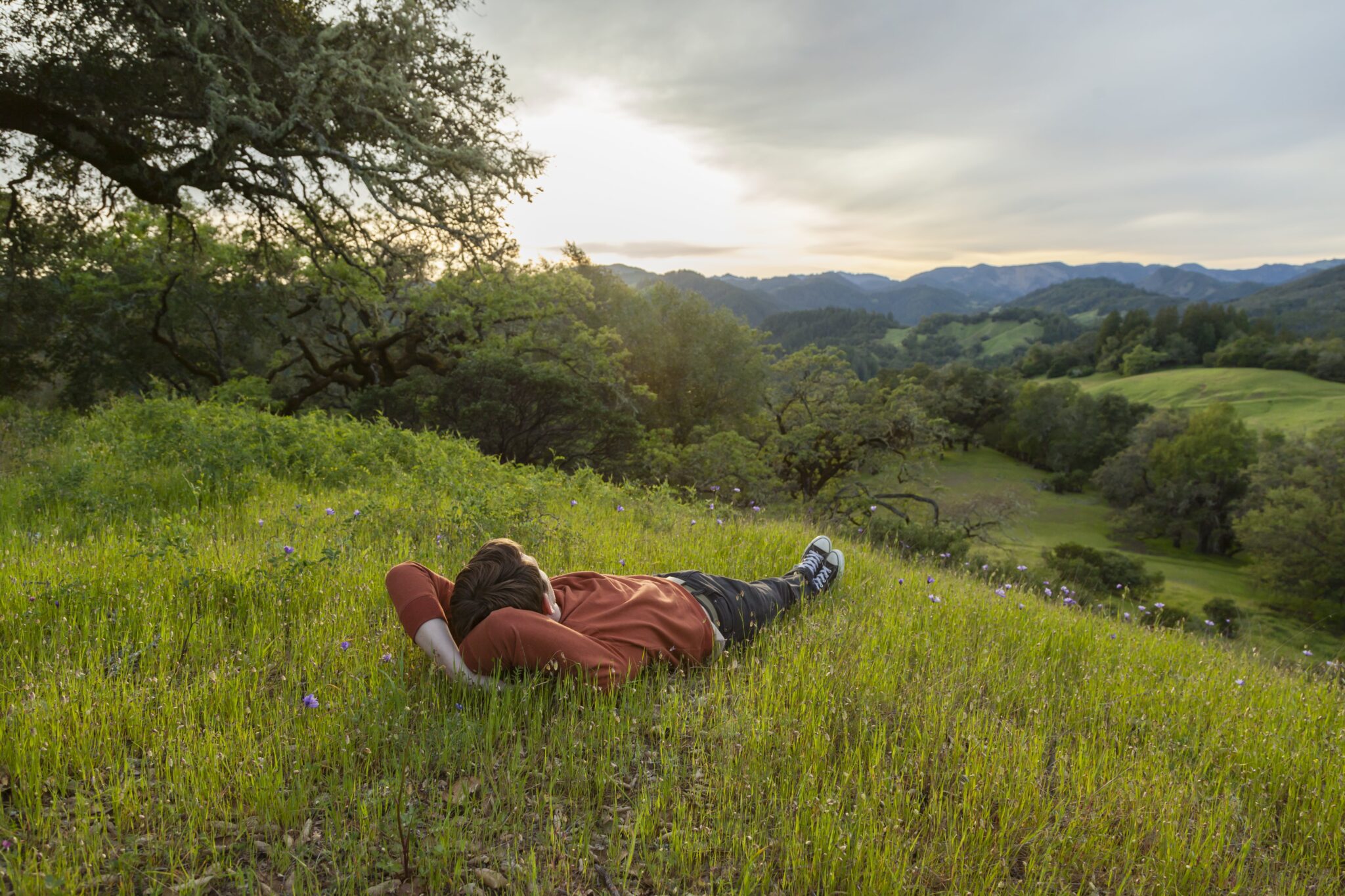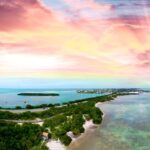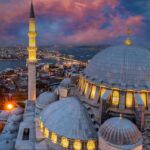I regard travel as an obligation—at least that’s my excuse. Travel gives us the opportunity to be someone else, somewhere else. It broadens the mind and opens the heart. I discovered this obsession early in my youth, and, of course, had the challenge of funding it. I had to find an approach I could afford and would still be enriching. It started with studying abroad in college and continued during my corporate career by being the guy volunteering for those so-called overseas “hardship” assignments. I never understood the “hardship” part.
One of the common denominators of the most vibrant places I’ve visited is how all of them are what they are because of outside forces and the resilience of its inhabitants. Travelers help shape what a community is. And we are all travelers.
I guess it shouldn’t be a surprise that upon exiting the corporate world, my husband and I would settle in Healdsburg—less than 150 miles from where I grew up. It is a charming small town (Population 11,000) in the middle of Northern California’s Wine Country—a little over an hour north of the Golden Gate Bridge. Both of us had only lived in big cities. Healdsburg may be small, but it definitely has a cool urban vibe.
This region has been a destination for over 12,000 years when a band of the Pomo tribe settled here attracted by the beauty of the landscape, the fertile soil and the healing waters. Those characteristics continue to draw people to Healdsburg, especially since they figured out how to turn the water into wine.

Sir Francis Drake passed by Northern California in 1579 and terrorized the indigenous peoples for a while. He planted a big British flag and claimed California for England. Then he left. The Spanish made it this far North by 1776 and began colonization. In 1810, about the time The Mexicans began fighting their 11-year long war of independence, the Russians built a settlement known as Fort Ross, along the Sonoma coast. It was more of a commercial venture focused on trapping and trading and a joint venture between Russians and Americans. The location was chosen for being beyond the influence of the Spanish in San Francisco. There was too much going on further south at the time for Mexico and Spain to worry about the Sonoma Coast.
After 1821, an Independent Mexico encouraged settlement of Alta California through land grants, and among the most coveted of those were in Sonoma County. Emigrating Americans had become Mexican citizens, thus eligible for those grants. One of the biggest grants, The Sotoyome Ranch (at over 48,000 acres) went to sea captain Henry Delano Fitch in 1841. He hired Cyrus Alexander to manage it and eventually transferred ownership of the eastern portion of the Rancho. Alexander Valley remains one of the most prestigious viticulture areas in the region.
Meanwhile by 1842, the Russians pulled out of the settlement on the Sonoma coast when other trading arrangements eliminated the need for Fort Ross. With the election of President James Polk in 1844, America developed ambitious expansion plans. The US offered to buy from Mexico the land north of the Rio Grande River, but the offer was rejected. A series of events along the border ultimately lead to the Mexican American War. As part of the treaty ending the war in 1848, the US paid Mexico $15,000,000 for the same land. Today, that might get you a reasonably nice penthouse in Downtown San Francisco.

1848 was also the year gold was discovered in California, and thus began the largest migration in US history. Over 300,000 people flooded into California—the majority were Americans, but 30,000 were from France alone. Within 7 years, San Francisco grew from a settlement of 200 to a city of 36,000. Among the most successful of the businesses were those that sold supplies to gold prospectors.
Meanwhile, some of the newcomers were a bit more forward thinking. They had come to California for the gold, and instead discovered its real estate. The new state government of California honored the Mexican land grants, but Cyrus Alexander’s claim for the Alexander Valley was denied since he hadn’t been the direct recipient. The rancho was auctioned off, and Harmon Heald, an enterprising businessman from Ohio bought 100 acres along the banks of the Russian River, laid out a town around a Spanish style plaza, and began selling lots. Thus, Healdsburg was founded. It was primarily an agriculture-based economy, with Healdsburg strategically located at the juncture of the Alexander, Dry Creek and Russian River Valleys. The tourists were still drawn to the curative waters of the nearby Geysers and Healdsburg would meet their lodging needs. The first three buildings along the plaza’s west side were hotels. As often happens, tourists came for a visit, then some simply took up permanent residence when they discovered the gentle way of life here.
Among them was Roderick Matheson, a Scotsman who came during the gold rush, settled in San Francisco but then opted for the Healdsburg life in 1856. He built a beautiful mansion for his family and then was invited to Lincoln’s inauguration. While in Washington, he got sucked up by the drumbeat of war, became a colonel in the Union Army and died in battle in 1862. During his short time in Healdsburg, he positively impacted the development of the settlement. His casket was returned to Healdsburg where he was given a hero’s burial in the local Oak Mound Cemetery. Meanwhile, disillusioned gold prospectors discovered the area and Healdsburg continued its growth.
Healdsburg finally incorporated in 1867. Streets were given the names commemorating the times—Lincoln, Grant, Sherman, Fitch and Matheson among them. The Northwest and Pacific Railway came in 1871. With that, more tourists and future residents. By 1886, Healdsburg had 2,500 residents and had built an ambitious new city hall adopting a neo-Romanesque style that was all the rage during the Second Industrial Revolution. New York was getting its first skyscrapers; Healdsburg had its massive City Hall.
Tourism and urban expansion continued with the advent of the automobile and the completion of the Golden Gate Bridge, slowing a bit during prohibition, the depression and World Wars I and II. Post WWII growth was significant, forcing the city’s adoption of its first zoning code. National retail brands found a reason to set up shop here and Purity Grocery Stores engaged renowned Chicago architect Harry Weese to design the city’s first supermarket.
One of the goals of the new zoning code was to preserve the walkability of the central area. That has been maintained over the years and is one of the reasons Healdsburg is cherished by both visitors and residents alike. In the real estate community, we often refer to the residences downtown as Stumble Homes. After an evening of five star dining, you don’t even need an Uber to get home.
The 1960s were kind of rough on the town. That was when the freeway bypass was completed. Suddenly it was easy to drive 12 miles to shop at the new malls in nearby towns. Local retail withered. Vacancy rates on the beloved plaza rose to over 40%. It was the story of urban blight that was spreading across America, only on a small scale.

In 1964, the old city hall was demolished and replaced with a sleek mid-century modern structure, in the hope of modernizing the plaza. That didn’t quite cut it. Then in the mid-1970s, the chamber of commerce and other concerned citizens got together to figure out a different means of revitalizing the town. They realized what Healdsburg had going for it since its founding was both wine and tourism. It was time for those two industries to get together.
The Spaniards had begun planting vineyards shortly after their arrival. Cultivation continued after statehood, and the coming of the railroad had turned it into an industry which continued to grow. The thirteen years of prohibition slowed it down a bit, but one year after its end, wine tourism began in earnest at the Italian Swiss Colony in nearby Asti.
The opportunity presented itself to make Healdsburg the center of that action. Hospitality and the wine industry began a collaboration like no other. Tasting rooms opened on the plaza, which brought the tourists, which led to new restaurants and B&Bs, and an assortment of art galleries and antique shops. Of course, it didn’t happen overnight. Healdsburg does things very deliberately because we want to get it right. Healdsburg is all about providing an experience you can’t get anywhere else.
By the year 2000, change had arrived in earnest. The west side of the plaza was graced by the newly constructed Hotel Healdsburg on the same site of Healdsburg’s original hotels. Its success spawned the development of other boutique hotels. What had been a bed-and-breakfast town soon had over 1,400 hotel rooms. And the demand continues to rise. Most recently, at the north end of town, Montage resorts has opened in Healdsburg, adding 130 rooms. Next year, a new 53 room hotel will be opened by Replay Resorts in the Mill District at the South end of town.
Even before becoming such a destination, Healdsburg has had a vibrant food culture. Farm to table has been the way of life here from the beginning. When we first moved here, we soon discovered that neighborhood potlucks seemed almost like competitive events! It was just that everybody wanted to share their best. And that is the overarching spirit of the community. Life here is a bit slower than in cities which gives us the time to figure out what matters.
We are blessed with talented home grown chefs as well as transplanted celebrity chefs who demonstrate their skills across the more than 35 restaurants in town. Each one of those chefs is helping all the others become even better. We eat well here!
Eventually one discovers that that shared commitment to excellence doesn’t stop with food and wine. The town boasts a vibrant art scene as well. Among other venues, the Paul Mahder Gallery is the largest gallery north of Los Angeles and features the best of local artists as well as those from around the world.
And then there is the architecture in Healdsburg—starting with that Matheson mansion and massive original city hall. There is a civic pride here that keeps the town on the forefront of architectural innovation whether that be Harry Weese’s late 40s cutting edge supermarket, to the Olson Kundig’s design for the Mill District currently under construction.

Outside forces tested the community’s resilience in 2017. It had been almost 55 years since a wildfire had swept through Sonoma County, and in October, the entire population was caught off guard. The devastation was heartbreaking, and it took a good three months for things to feel as though they were back to normal—at least for those who hadn’t suffered losses. Healdsburg was lucky and the entire town was untouched. It seems, among other things, those vineyards are a very effective firebreak. That fire, though, reshaped our thinking. With climate change, fires just became part of life and over the last five years, becoming fire wise is the new normal. And it is working. We had to evacuate in 2019, and again, Healdsburg was unscathed. We returned to town on a Thursday and by the weekend, everything was back to normal. It has certainly not dampened any enthusiasm for the town.
One hundred fifty-five years after its incorporation, Healdsburg remains a vibrant small town doing its best to balance the needs of both residents and tourists as well as the day-to-day challenges facing any community. For example, things like a member of the Russian Duma demanding the return of Fort Ross. Other issues include the continual surge in housing prices further impacted by the pandemic. In the last three years, though, about 150 affordable units have been built or are in process. It would be great if one day, all the people who work here could afford to live here.
As a twenty-year resident I welcome the tourists with open arms, for I have seen how they enrich the town’s fabric and may even become future neighbors. For me, it’s a pleasure walking around town and hearing a multitude of languages being spoken. Yes, this is tiny Healdsburg and the world has taken notice.



